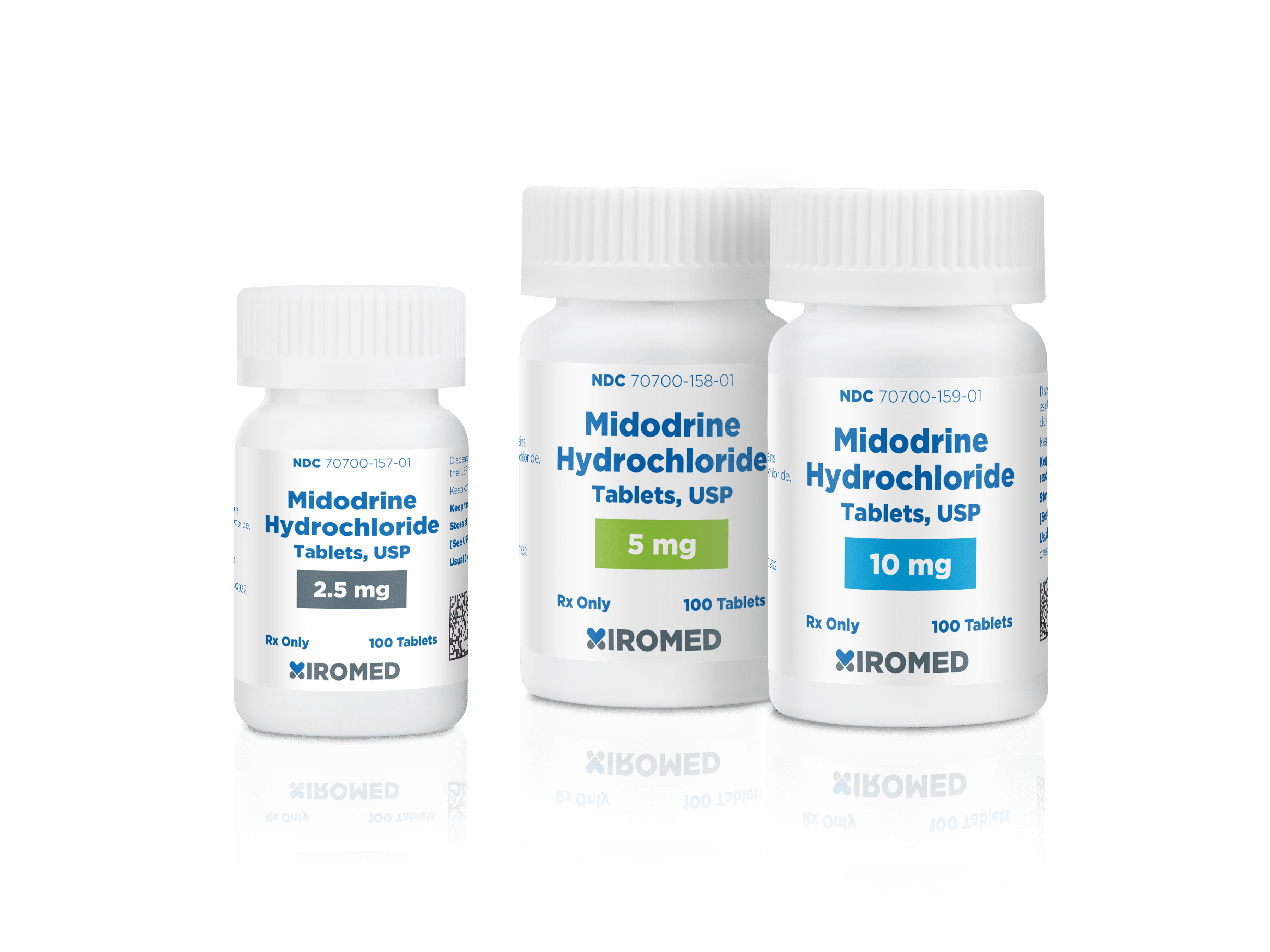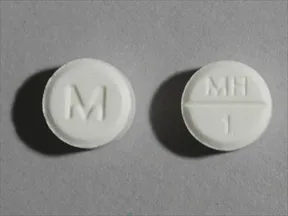Midodrine is a direct-acting prodrug and sympathomimetic agent with antihypotensive properties. midodrine is converted to its active metabolite, desglymidodrine by deglycination reaction. desglymidodrine selectively binds to and activates alpha-1-adrenergic receptors of the arteriolar and venous vasculature. this causes smooth muscle contraction and leads to an elevation of blood pressure. Usual adult dose for hypotension. 10 mg orally 3 times a day during daytime hours when the patient needs to be upright. comments: -the three daily doses may be given at 3-hour intervals, if needed, but not more frequently. -this drug should not be given after the evening meal or less than 4 hours before bedtime.

Proamatine Orvaten Midodrine Dosing Indications Interactions

Midodrine 5 mg tablets should be taken during daytime when the patient performs his daily activities in upright position. a dosing schedule of 3-4 hour . Information for patients. Symptoms of overdose could include hypertension, piloerection (goosebumps), a sensation of coldness and urinary retention. there are 2 reported cases of overdosage with midodrine, both in young males. one midodrine tablet patient ingested midodrine drops, 250 mg, experienced systolic blood pressure greater than 200 mmhg, was treated with an iv injection of 20 mg of phentolamine, and was discharged the same night without any complaints. the other patient ingested 205 mg of midodrine (41 5-mg tablets), and was found lethargic and unable to talk, unresponsive to voice but responsive to painful stimuli, hypertensive and bradycardic. gastric lavage was performed, and the patient recovered fully by the next day without sequelae. the single doses that would be associated with symptoms of overdosage or would be potentially life-threatening are unknown. the oral ld50is approximately 30 to 50 mg/kg in rats, 675 mg/kg in mice, and 125 to 160 mg/kg in dogs. desglymidodrine is dialyzable. recommended general tre The most frequent adverse reactions seen in controlled trials were supine and sitting hypertension; paresthesia and pruritus, mainly of the scalp; goosebumps; chills; urinary urge; urinary retention and urinary frequency. the frequency of these events in a 3-week placebo-controlled trial is shown in the following table: adverse events 1includes hyperesthesia and scalp paresthesia 2includes dysuria (1), increased urinary frequency (2), impaired urination (1), urinary retention (5), urinary urgency (2) 3includes scalp pruritus 4includes patients who experienced an increase in supine hypertension 5includes abdominal pain and pain increase less frequent adverse reactions were headache; feeling of pressure/fullness in the head; vasodilation/flushing face; confusion/thinking abnormality; dry mouth; nervousness/anxiety and rash. other adverse reactions that occurred rarely were visual field defect; dizziness; skin hyperesthesia; insomnia; somnolence; erythema multiforme; canker sore; dry s
Midodrine Uses Side Effects Warnings Drugs Com
Medscape indication-specific dosing for proamatine, orvaten (midodrine), frequency-based adverse effects, comprehensive interactions, contraindications, . Midodrine hydrochloride tablets, usp 2. 5 mg are available for oral administration as white, round, scored midodrine tablet tablets, imprinted "apo" on one side and "mid" above bisect "2. 5" on the other side. they are supplied as follows: bottles of 30 (ndc 60505-1320-3) bottles of 100 (ndc 60505–1320-1). Midodrine. tablet. fsa or hsa eligible. midodrine (mi doe dreen) is used to treat low blood pressure in patients who have symptoms like dizziness when going . Midodrine hydrochloride tablets are indicated for the treatment of symptomatic orthostatic hypotension (oh). because midodrine hydrochloride tablets can cause marked elevation of supine blood.
Midodrine Oral Route Proper Use Mayo Clinic

Midodrine Oral Route Side Effects Mayo Clinic
Midodrine c12h18n2o4 pubchem.
If you miss a dose of this medicine, take it as soon as possible. however, if it is almost time for your next dose, skip the missed dose and go back to your regular dosing schedule. do not double doses. General. Midodrine belongs to the class of medications known as vasopressors. it is used to relieve symptoms of low blood pressure (such as dizziness, lightheadedness, . Mechanism of action: midodrine forms an active metabolite, desglymidodrine, that is an alpha1-agonist, and exerts its actions via activation of the alpha-adrenergic receptors of the arteriolar and venous vasculature, producing an increase in vascular tone and elevation of blood pressure. desglymidodrine does not stimulate cardiac beta-adrenergic receptors. desglymidodrine diffuses poorly across the blood-brain barrier, and is therefore not associated with effects on the central nervous system. administration of midodrine results in a rise in standing, sitting, and supine systolic and diastolic blood pressure in patients with orthostatic hypotension of various etiologies. standing systolic blood pressure is elevated by approximately 15 to 30 mmhg at 1 hour after a 10 mg dose of midodrine, with some effect persisting for 2 to 3 hours. midodrine has no clinically significant effect on standing or supine pulse rates in patients with autonomic midodrine tablet failure. pharmacokinetics:midodrine is a pro

*all other brand or product names located in this site are trademarks of their respective holders. midodrine hydrochloride tablets. ndc number :. Midodrine hydrochloride is a pro-drug of desglymidodrine. desglymidodrine is a sympathomimetic agent, which acts on peripheral alpha-adrenergic receptors to increase arterial resistance, resulting in an increase in blood pressure. The dose of this medicine will be different for different patients. follow your doctor's orders or the directions on the label. the following information includes only the average doses of this medicine. if your dose is different, do not change it unless your doctor tells you to do so. the amount of medicine that you take depends on the strength of the medicine. also, the number of doses you take each day, the time allowed between doses, and the length of time you take the medicine depend on the medical problem for which you are using the medicine. 1. for oral dosage form (tablets): 1. 1. for low blood pressure: 1. 1. 1. adults—10 milligrams (mg) three times a day in approximately 4-hour intervals during daytime hours: shortly before or upon rising in the morning, at midday, and in the late afternoon (not later than 6 p. m. ). your doctor may increase your dose if needed. 1. 1. 2. children—use and dose must be determined by your doctor.
See full list on drugs. com. Each gutron 2. 5 mg tablet contains 2. 5 mg midodrine midodrine tablet hydrochloride. gutron 5 mg tablets are orange, circular, flat tablets of 7 mm scored on one side and. Warnings. may cause marked elevation of supine blood pressure; reserve use for patients whose lives are considerably impaired despite standard clinical care for orthostatic hypotension.. this medication contains midodrine. do not take proamatine or orvaten if you are allergic to midodrine or any ingredients contained in this drug.
Name:midodrine hydrochloride tablets, usp dosage form: 2. 5 mg, 5 mg and 10 mg tablets for oral administration active ingredient:midodrine hydrochloride, usp 2. 5 mg, 5 mg and 10 mg inactive ingredients:microcrystalline cellulose, crospovidone, hydroxypropyl cellulose, colloidal silicon dioxide and magnesium stearate. pharmacological classification:vasopressor/antihypotensive chemical names (usan: midodrine hydrochloride): (1) acetamide, 2-amino-n-[2-(2,5-dimethoxyphenyl)-2-hydroxyethyl]-monohydrochloride, (±)-; (2) (±)-2-amino-n-(ß-hydroxy-2,5-dimethoxyphenethyl)acetamide monohydrochloride ban, inn, jan: midodrine structural formula: molecular formula: c12h18n2o4hcl molecular weight:290. 7 organoleptic properties:odorless, white to off-white powder solubility:soluble in water, sparingly soluble in methanol pka: 7. 8 (0. 3% aqueous solution) ph:3. 5 to 5. 5 (5% aqueous solution) melting range:200 to 203°c. See full list on mayoclinic. org. See full list on mayoclinic. org.
The potential for supine and sitting hypertension should be evaluated at the beginning of midodrine therapy. supine hypertension can often be controlled by preventing the patient from becoming fully supine, i. e. sleeping with the head of the bed elevated. the patient should be cautioned to report symptoms of supine hypertension immediately. symptoms may include cardiac awareness, pounding in the ears, headache, blurred vision, etc. the patient should be advised to discontinue the medication Midodrine hydrochloride tablets are indicated for the treatment of symptomatic orthostatic hypotension (oh). because midodrine hydrochloride tabletscan cause marked elevation of supine blood pressure (bp>200 mmhg systolic), it should be used in patients whose lives are considerably impaired despite standard clinical care, including non-pharmacologic treatment (such as support stockings), fluid expansion, and lifestyle alterations. the indication is based on midodrine’s effect on increases in 1-minute standing systolic blood pressure, a surrogate marker considered likely to correspond to a clinical benefit. at present, however, clinical benefits of midodrine hydrochloride tablets, principally improved ability to perform life activities, have not been established. further clinical trials are underway to verify and describe the clinical benefits of midodrine hydrochloride tablets. after initiation of treatment, midodrine hydrochloride tabletsshould be continued only for patients who re This medication is used for certain patients who have symptoms of low blood pressure when standing. this condition is also known as orthostatic hypotension.
Jan 01, 2021 · midodrine hydrochloride tablets usp, 2. 5 mg having functional scoring are white to off-white round, flat-faced, beveled edge, scored tablets debossed with ‘l’ above the score and plain on below the score on one side of the tablet and ‘584’ on the other side. Leg cramps. pain or sensitivity of the skin to touch. stomach problems such as gas, heartburn, or nausea. trouble seeing. trouble with sleeping. weakness. other side effects not listed may also occur in some patients. if you notice any midodrine tablet other effects, check with your healthcare professional. call your doctor for medical advice about side effects.


0 komentar:
Posting Komentar